Abstract
The effect of various electrolytes on the adsorption of poliovirus was measured in 250-cm-long soil columns with ceramic samplers at different depths. Viruses suspended in deionized water moved much farther through the soil than those suspended in tap water, whereas movement in sewage water was intermediate. The salt content of the tap water and sewage water promoted virus adsorption, but evidently the organic compounds in sewage retarded adsorption. When viruses were suspended in chloride solutions of K+, Na+, Ca+, and Mg2+, virus adsorption increased as the cation concentration and valence increased. The depth of virus penetration was related to the ionic strength of the solutions. Virus penetration data for NO3−, SO42−, and H2PO4− salts of K+, Na+, and Ca2+ indicated that other anions were more effective than Cl− in promoting virus adsorption. Also, NH4+ was more effective than other cations in limiting the penetration depth of viruses. It seems that ions composed of radicals are more effective than ions composed of single atoms in promoting virus adsorption. Al3+ was the most effective ion in limiting virus penetration, probably owing to flocculation of the viruses. Adding AlCl3 concentrations to secondary sewage effluent to provide an Al3+ concentration of 0.1 mM reduced the virus penetration depth to 40 cm. These studies show that the ionic composition of the suspending solutions must be considered in predicting virus penetration depths, and it may be practical to add low concentrations of a flocculating agent such as AlCl3 to sewage water to limit virus movement through very porous soils.
Full text
PDF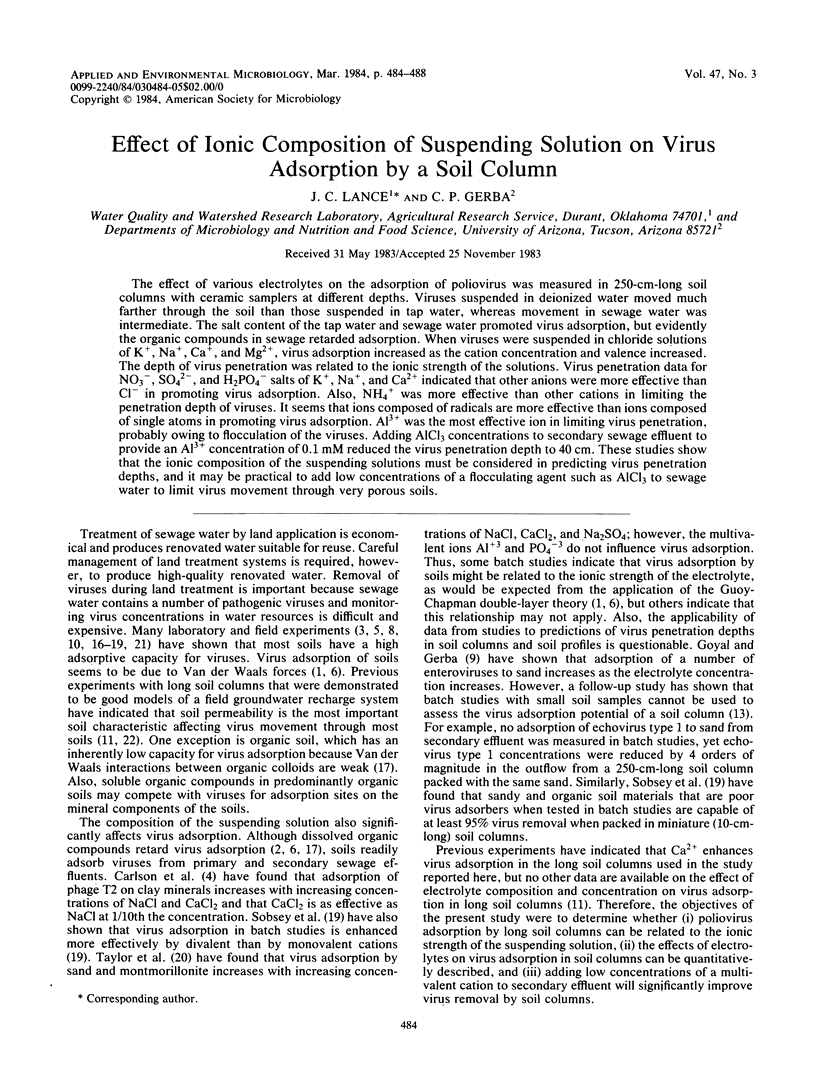
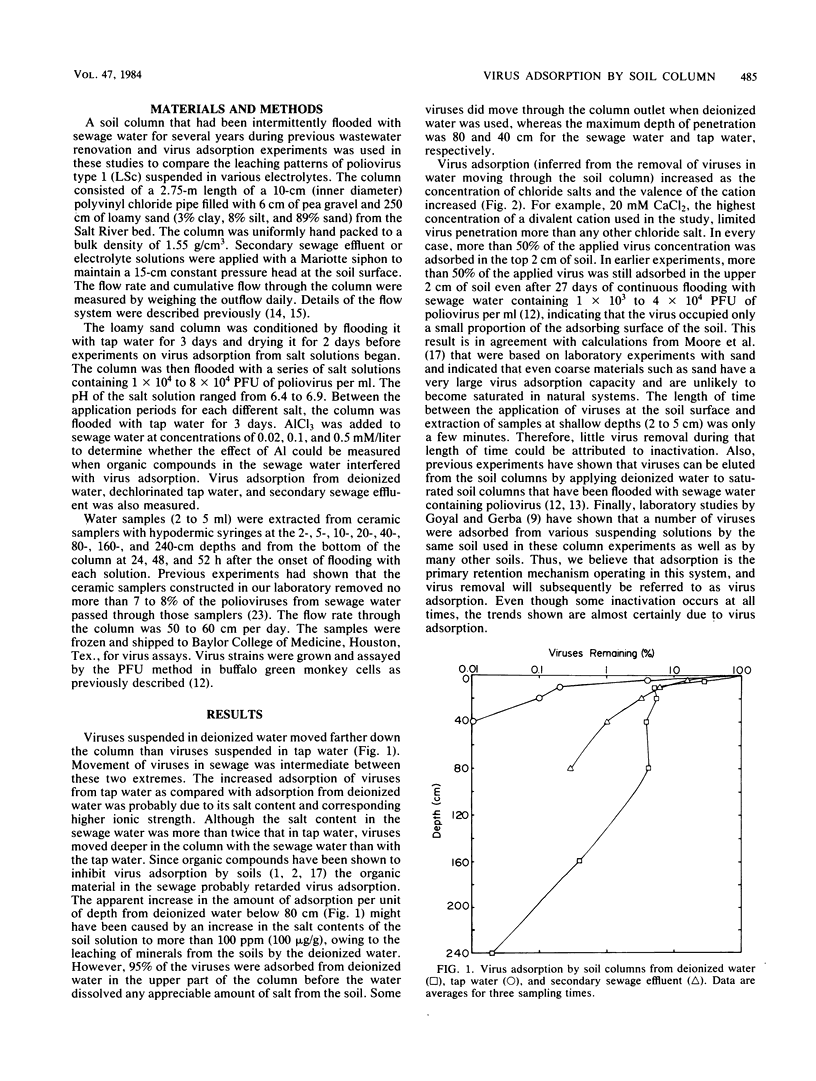
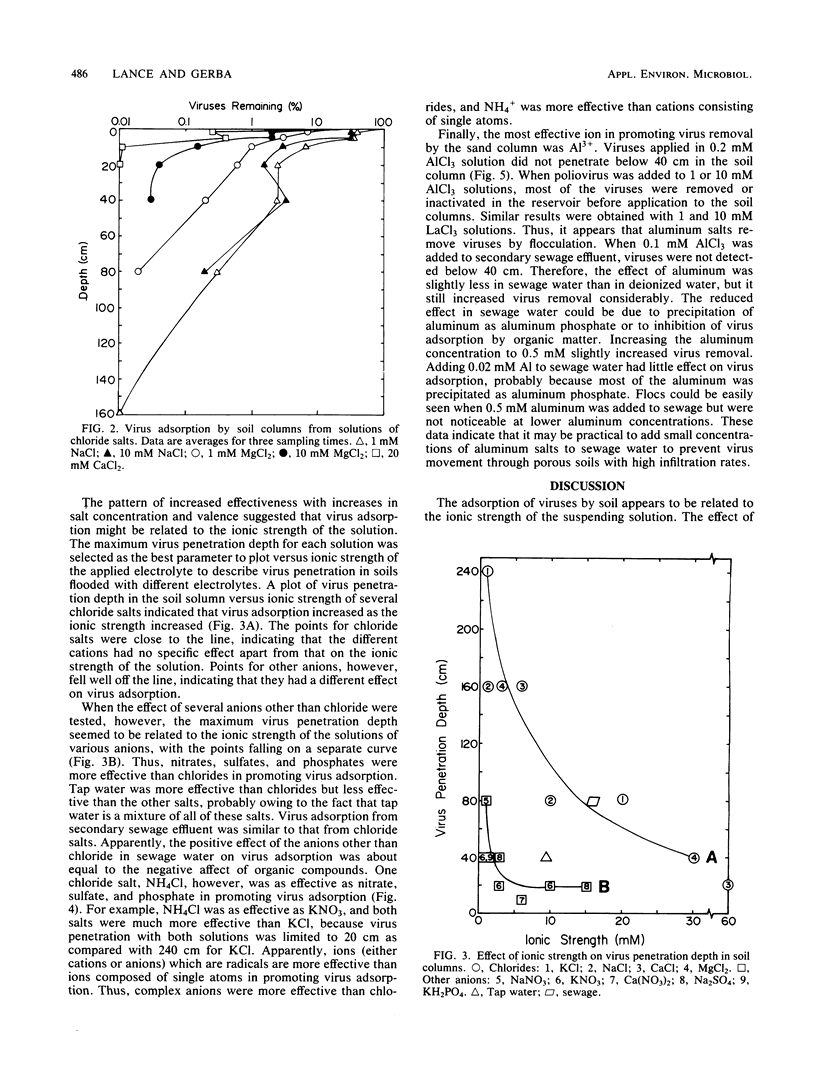
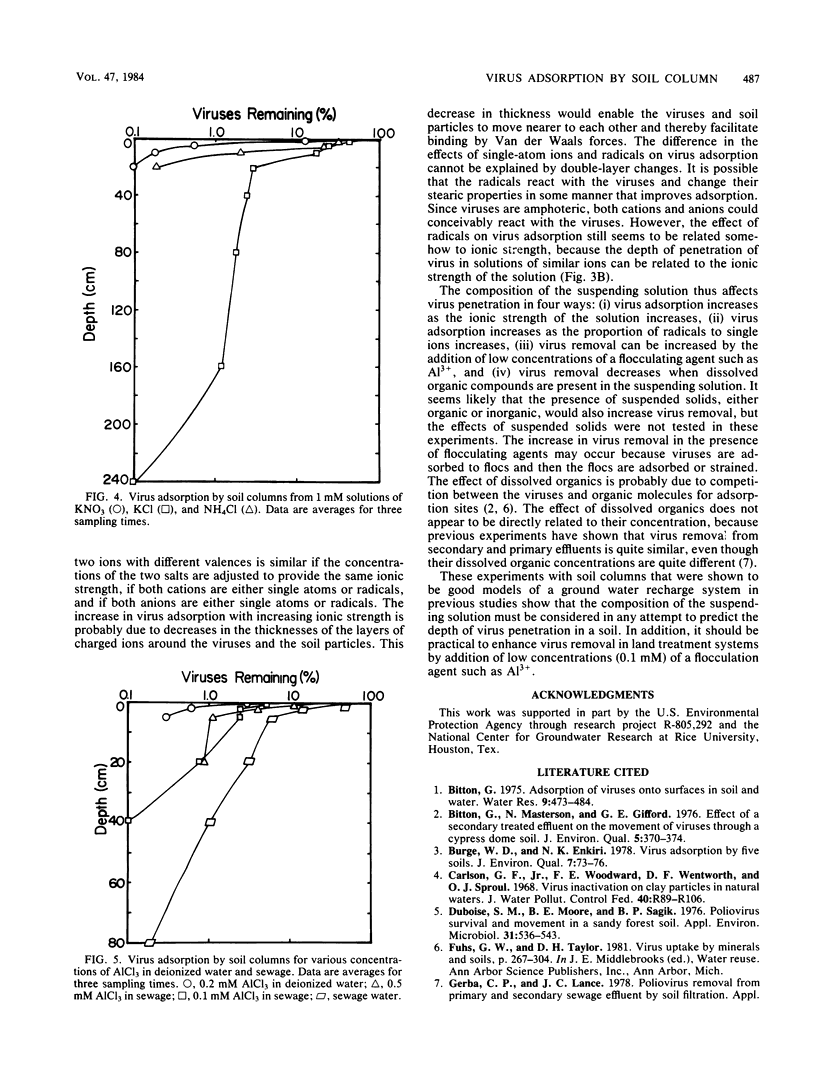
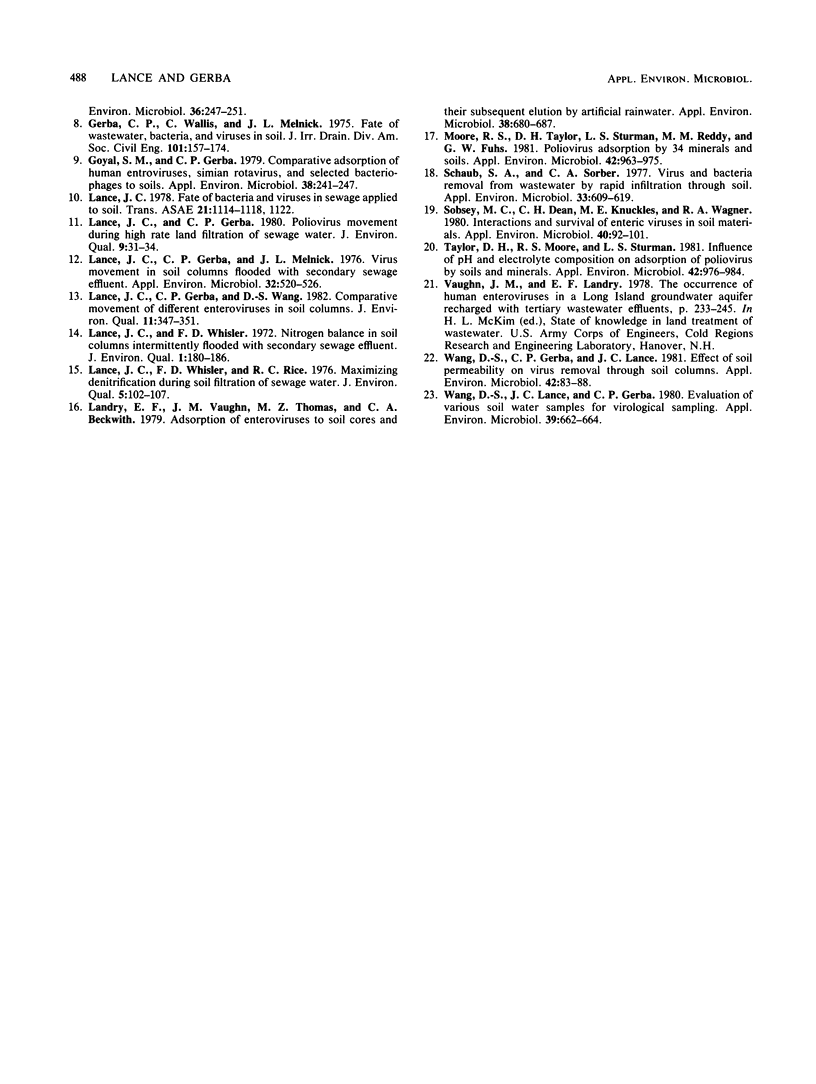
Selected References
These references are in PubMed. This may not be the complete list of references from this article.
- Duboise S. M., Moore B. E., Sagik B. P. Poliovirus survival and movement in a sandy forest soil. Appl Environ Microbiol. 1976 Apr;31(4):536–543. doi: 10.1128/aem.31.4.536-543.1976. [DOI] [PMC free article] [PubMed] [Google Scholar]
- Goyal S. M., Gerba C. P. Comparative adsorption of human enteroviruses, simian rotavirus, and selected bacteriophages to soils. Appl Environ Microbiol. 1979 Aug;38(2):241–247. doi: 10.1128/aem.38.2.241-247.1979. [DOI] [PMC free article] [PubMed] [Google Scholar]
- Lance J. C., Gerba C. P., Melnick J. L. Virus movement in soil columns flooded with secondary sewage effluent. Appl Environ Microbiol. 1976 Oct;32(4):520–526. doi: 10.1128/aem.32.4.520-526.1976. [DOI] [PMC free article] [PubMed] [Google Scholar]
- Landry E. F., Vaughn J. M., Thomas M. Z., Beckwith C. A. Adsorption of enteroviruses to soil cores and their subsequent elution by artificial rainwater. Appl Environ Microbiol. 1979 Oct;38(4):680–687. doi: 10.1128/aem.38.4.680-687.1979. [DOI] [PMC free article] [PubMed] [Google Scholar]
- Moore R. S., Taylor D. H., Sturman L. S., Reddy M. M., Fuhs G. W. Poliovirus adsorption by 34 minerals and soils. Appl Environ Microbiol. 1981 Dec;42(6):963–975. doi: 10.1128/aem.42.6.963-975.1981. [DOI] [PMC free article] [PubMed] [Google Scholar]
- Schaub S. A., Sorber C. A. Virus and bacteria removal from wastewater by rapid infiltration through soil. Appl Environ Microbiol. 1977 Mar;33(3):609–619. doi: 10.1128/aem.33.3.609-619.1977. [DOI] [PMC free article] [PubMed] [Google Scholar]
- Sobsey M. D., Dean C. H., Knuckles M. E., Wagner R. A. Interactions and survival of enteric viruses in soil materials. Appl Environ Microbiol. 1980 Jul;40(1):92–101. doi: 10.1128/aem.40.1.92-101.1980. [DOI] [PMC free article] [PubMed] [Google Scholar]
- Taylor D. H., Moore R. S., Sturman L. S. Influence of pH and electrolyte composition on adsorption of poliovirus by soils and minerals. Appl Environ Microbiol. 1981 Dec;42(6):976–984. doi: 10.1128/aem.42.6.976-984.1981. [DOI] [PMC free article] [PubMed] [Google Scholar]
- Wang D. S., Gerba C. P., Lance J. C. Effect of soil permeability on virus removal through soil columns. Appl Environ Microbiol. 1981 Jul;42(1):83–88. doi: 10.1128/aem.42.1.83-88.1981. [DOI] [PMC free article] [PubMed] [Google Scholar]
- Wang D. S., Lance J. C., Gerba C. P. Evaluation of various soil water samplers for virological sampling. Appl Environ Microbiol. 1980 Mar;39(3):662–664. doi: 10.1128/aem.39.3.662-664.1980. [DOI] [PMC free article] [PubMed] [Google Scholar]


